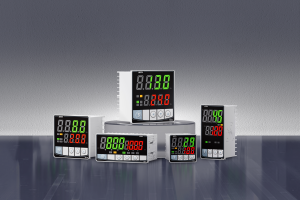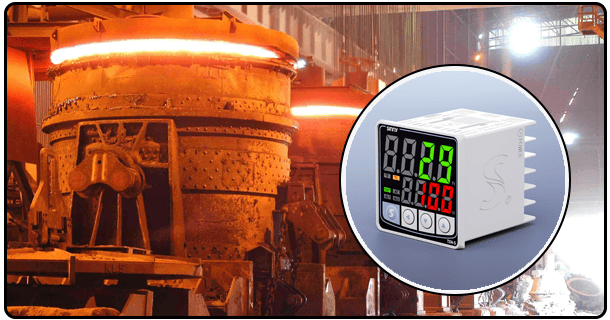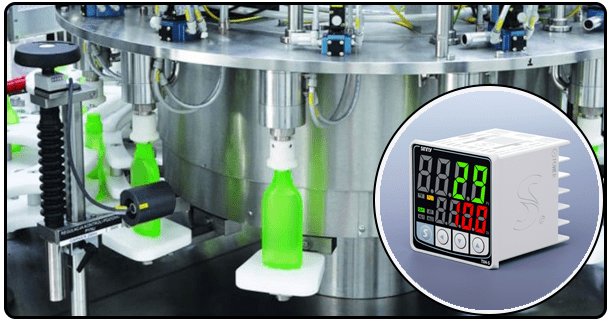Thermocouple PID controller IC: Applications, Features and Benefits
1. Introduction
Modern industry has made temperature regulation a necessity. Precision temperature control is essential for HVAC systems, automotive or manufacturing applications. It ensures safety and quality. At the heart of such systems lies the Temperature PID Controller IC, a key component designed to implement the powerful Proportional-Integral-Derivative (PID) control algorithm.
They are a reliable and efficient way to keep temperatures stable by making adjustments in real time based on external factors. This article will explore the benefits, features, advantages, setup, applications and key features of PID temperature controller ICs.
Features
The compact and advanced design of temperature PID controllers makes them perfect for many applications. Here are some of the key features.
Stability and High Precision These ICs can deliver temperature accuracy of up to 0.1degC. The level of accuracy is critical for any process that requires strict temperature control.
Sensor Integration Temperature controller ICs can be used with a variety of sensors, such as thermocouples (thermoelectrics), RTDs and thermistors. The compatibility of these controllers allows for a wide range of applications.
Compact Design These ICs have a compact design, which makes them easier to integrate in existing systems. The energy efficiency of these ICs reduces the power consumed in industrial environments.
Dynamic System Parameter Adjustments The IC dynamically adjusts the system parameters by processing data in real time. This ensures stable operation. This enhances the system's responsiveness while minimizing errors. It also improves overall performance.
PID Parameters Customizable Users are able to fine-tune Proportional Integral and Derivative settings in order to optimize the IC for specific applications. The level of customization allows for adaptability in different industries.
2. Working Principle
Temperature PID controllers ICs are primarily designed to control temperature using the PID algorithm. We will break the basic components down:
The proportional control (P) element: It provides immediate response to temperature variations. This element is directly related to the size of the temperature error. It allows for quick correction.
Integral Control I: This component is designed to address errors that accumulate over time. It focuses on steady-state error. This component ensures that the setpoint is reached and maintained without any lingering differences.
Control Derivative (D) This derivative control function is based on the analysis of system behaviour by analysing temperature change rates. This helps to prevent system instability and overshooting.
These principles can be integrated in an IC to allow real-time adjustments and monitoring. The IC uses advanced algorithms to ensure the accuracy and stability of complex temperature systems.
3. Benefits
Temperature PID Controller IC is a highly useful component for modern technology.
Enhanced temperature regulation These ICs provide precise temperature control in applications such as semiconductor manufacturing or biopharmaceutical processes.
Economical ICs are a more cost-effective alternative to PID controllers. They offer the same performance as full-scale devices, but at a lower price. The affordability of these ICs makes them available to many users.
Energy efficiency By allowing for accurate changes in real-time, energy consumption can be minimized. These ICs are therefore an eco-friendly choice for industry.
Flexibility They can be used for a wide range of applications, including small-scale experimentation and large-scale industrial process.
Reliability These ICs, which are built with advanced algorithms and durable materials to ensure consistent performance in challenging environments, feature a high level of reliability.
4. Application
Temperature PID Controller ICs are versatile enough to be used in a wide range of industries.
HVAC System: The ICs in these systems regulate the indoor climate, by maintaining exact temperatures, through heating, ventilation and air-conditioning systems.
Automotive Industry These devices are vital in the management of engine temperatures, assuring optimal performance and preventing excessive heating.
Electronics manufacturing: These ICs are used for processes like chip testing, circuit assembly, soldering and more.
Food and Beverage Industry PID Controller ICs are used to regulate temperature precisely in applications such as pasteurization, fermentation and refrigeration.
Medical equipment: These ICs can be found in everything from sterilization chambers to incubators. They are vital for the maintenance of critical temperatures within medical equipment.
5. Popular Temperature PID Controller ICs
Other commonly used temperature PID controllers include:
LM35 Renowned as a temperature sensor of high precision and simplicity.
MAX6675 : An advanced IC used in applications requiring thermocouples.
TMP102 Small and compact, it is ideal for mobile devices.
These ICs offer unique characteristics that are suited for different applications, allowing the user to choose one most suitable to their needs.
6. Install and Setup
Installation and setup is vital to ensuring the best performance. Here is a guide that will take you through the steps:
Choose the appropriate IC: Take into consideration the requirements of the application, including temperature ranges and sensor compatibility.
Installation and Wiring: Use the instructions provided by the manufacturer to wire the IC with sensors, actuators and power sources.
Configure the PID parameters using the software provided. Validate accuracy by performing test runs.
Troubleshooting and Maintenance: Check connections regularly and upgrade firmware (if necessary) to ensure efficiency.
These steps will help users to maximize their PID temperature controller's performance and life.
The PID Temperature Controller IC is a breakthrough technology in temperature regulation. The precision, cost-effectiveness, and adaptability of this IC make it an essential component in modern technological and industrial systems. Integrating a temperature controller IC into HVAC systems, automotive or electronic manufacturing can improve efficiency and reliability.
Using these ICs can revolutionize processes, allowing you to achieve unprecedented control.
Discover the working principles, features, benefits, and applications of temperature PID Controller IC. Ideal for HVAC and automotive industries.























